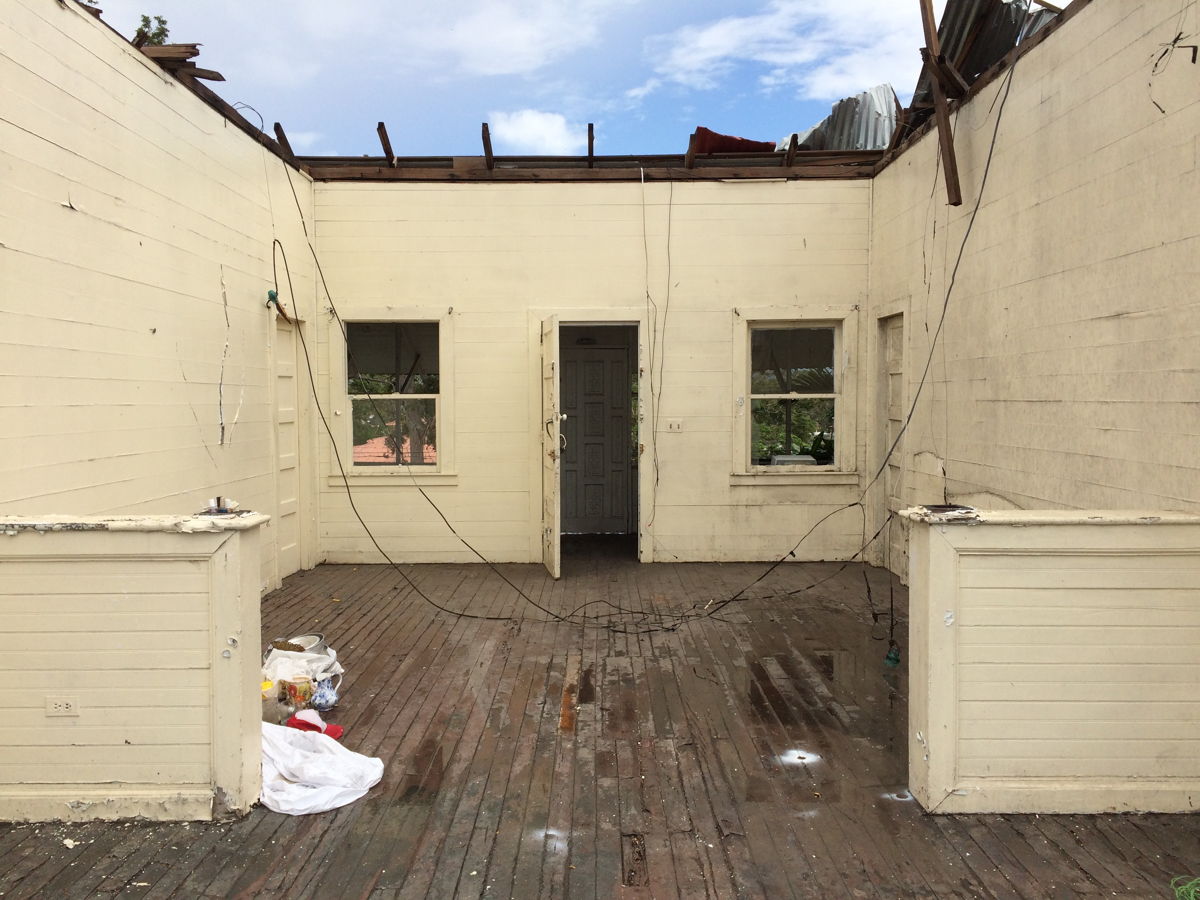On September 20, 2017, Hurricane María, the worst hurricane to hit Puerto Rico in three generations, battered the island with sustained winds of 155 mph and gusts exceeding 190 mph as well as 37.9 peak inches of rain, widespread flooding, storm surges, and untold tornadoes. Following a slow, 24-hour diagonal path, María crossed Puerto Rico from the southeast to the northwest. A stunned island woke up the next day to a desolate scene: catastrophic destruction of vital infrastructure—the entire electrical grid, communications, airports, shipping ports, and roadways—as well as the built environment and natural landscape. In short, the very fabric of life in Puerto Rico had been torn asunder.
Amid the devastation, the condition of Puerto Rico’s more than 5,000 historic properties was initially unknown. The need for information about the fate of the historic patrimony was urgent, but heritage custodians faced considerable challenges, such as the difficulties posed by the lack of communications. Para la Naturaleza, a nonprofit organization that engages people in the conservation of Puerto Rico’s natural ecosystems and cultural heritage through hands-on experiences, recruited Diana Luna-Serbiá, AIA—a specialist in historic preservation and associate dean of the University of Puerto Rico’s School of Architecture—and a group of architecture students to conduct an islandwide survey of historic properties, sharing the results with the state historic preservation office (SHPO) and the Institute of Puerto Rican Culture. The effort, dubbed “Map of History,” was funded with a generous donation from the National Trust for Historic Preservation.
To begin mapping the damages to historic structures, 13 students and volunteers followed the hurricane’s route, using their own vehicles and overcoming damaged or obstructed roads and gas shortages, among other challenges. Beginning just three weeks after the hurricane, they visited Puerto Rico’s 12 locally designated historic zones, 15 federal historic districts, and approximately 450 sites, recording observable damages and documenting them with photographs. They used custom report to provide a comprehensive view of the damages as quickly as possible by conducting visual assessments of structures and assigning them categories: minor—damage to doors, windows, roof metal, or other elements; intermediate—partial roof or partial wall loss; major—total roof loss; or collapse.
By the first week of November, the group had documented 4,882 structures in 45 municipalities, all in a period of three weeks. Preliminary results, which Para la Naturaleza provided to the SHPO, the Institute of Puerto Rican Culture, and the Federal Emergency Management Agency on November 8, 2017, showed that areas south of the eyewall suffered the greatest damages. In the historic zones of Arroyo, Coamo, Guayama, and Ponce, as well as the Aguirre Historic District, more than 130 structures sustained major damage and 20 collapsed entirely.
READ MORE AT SavingPlaces.org

